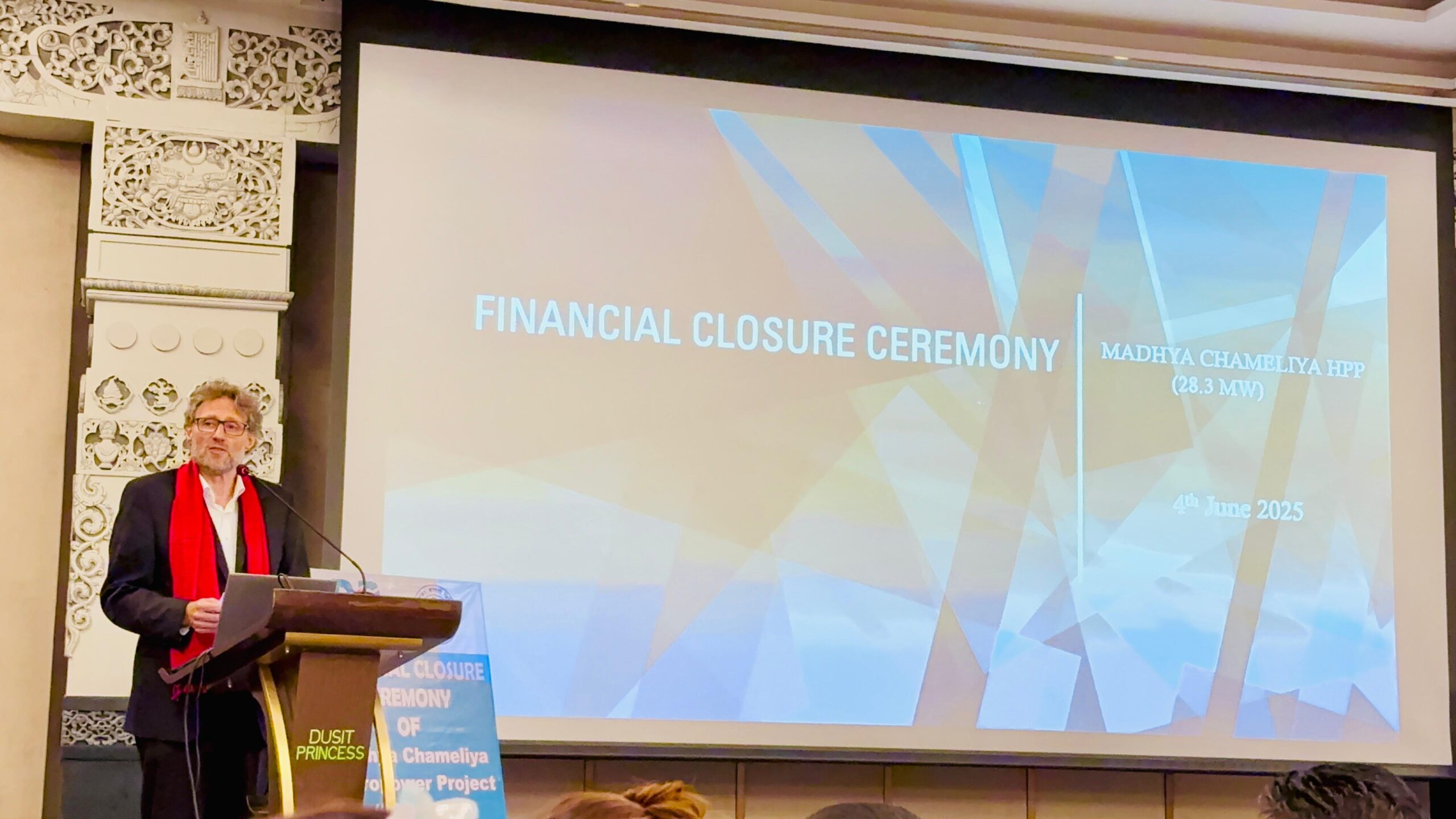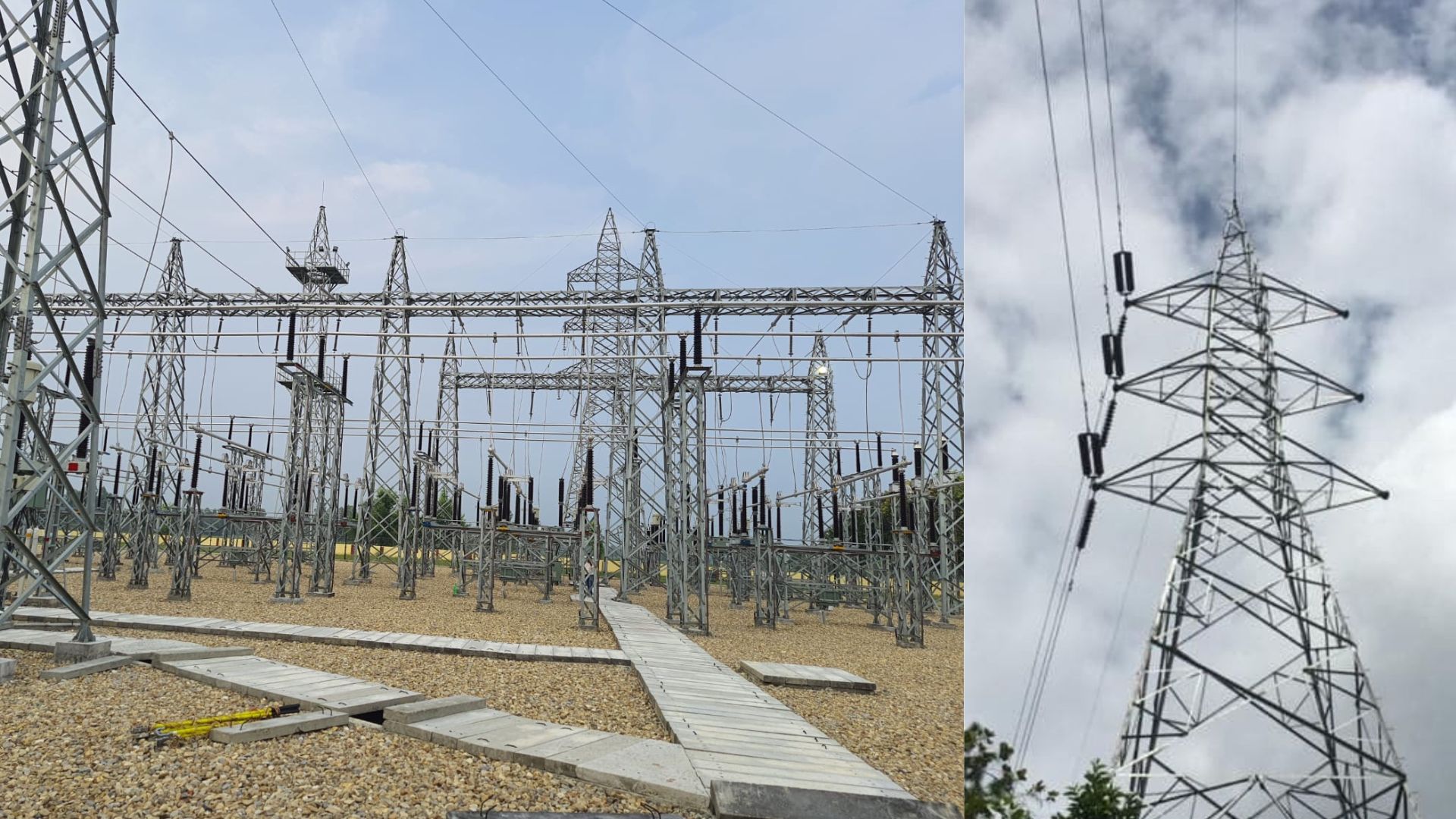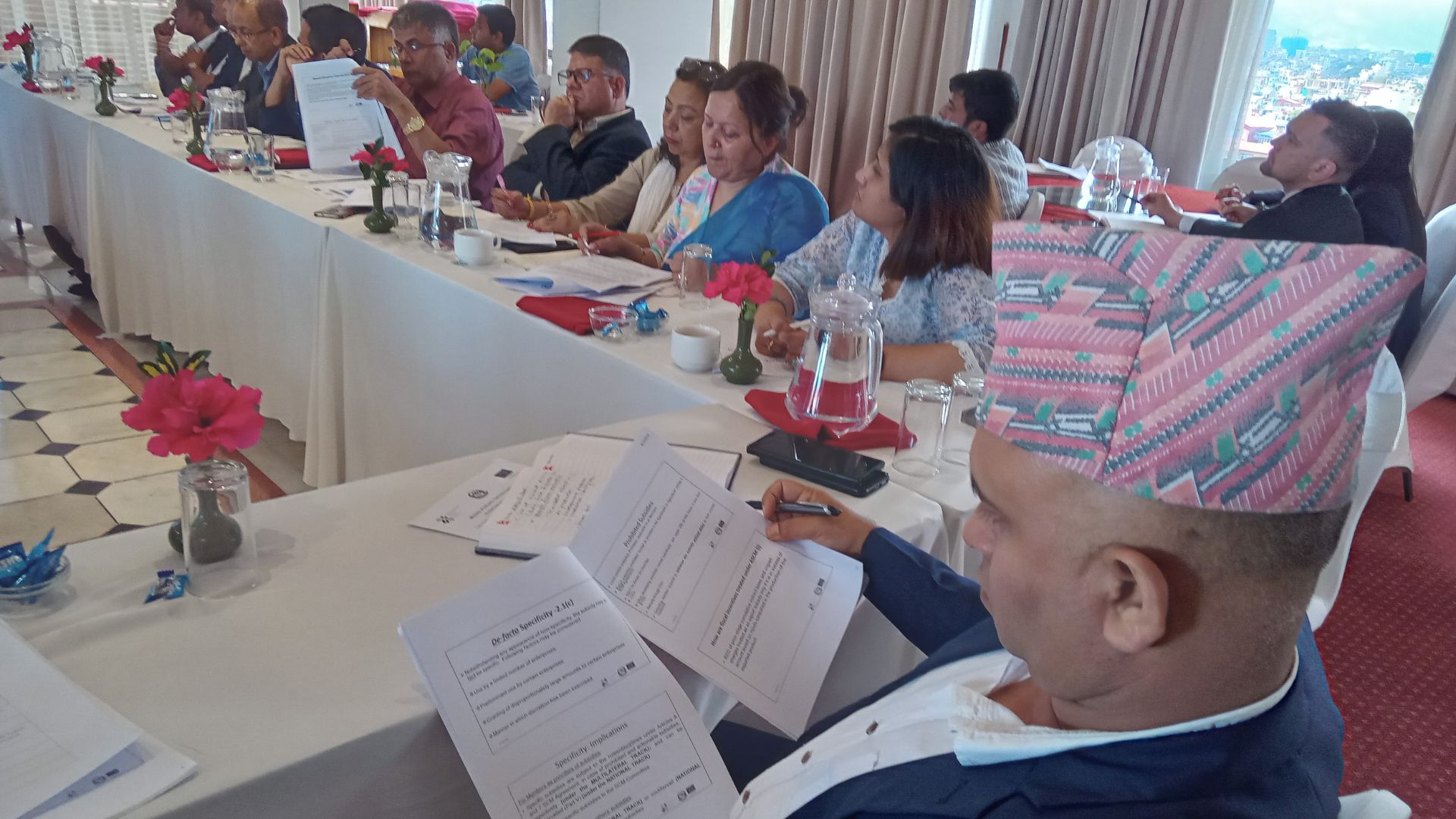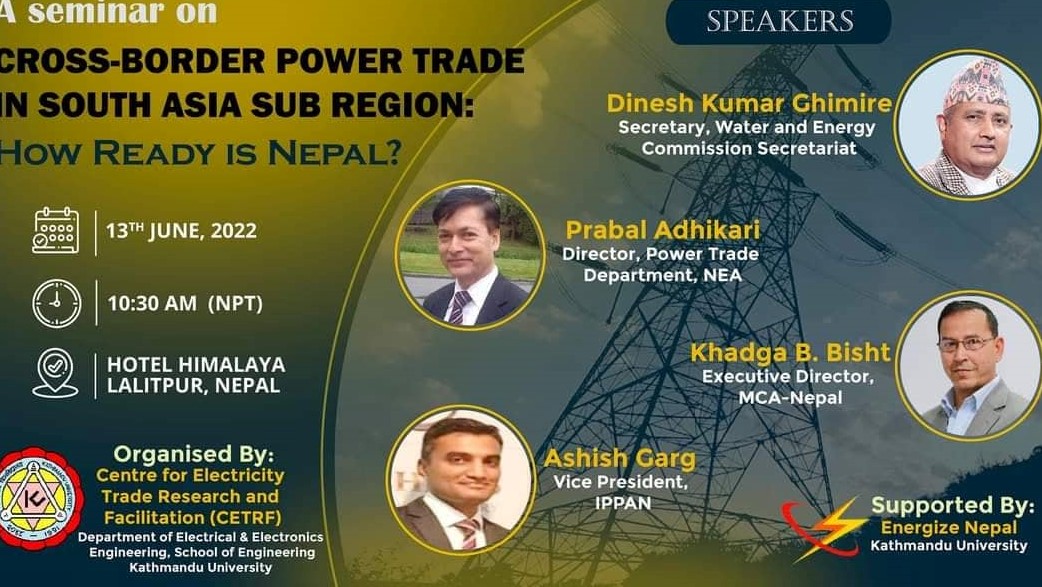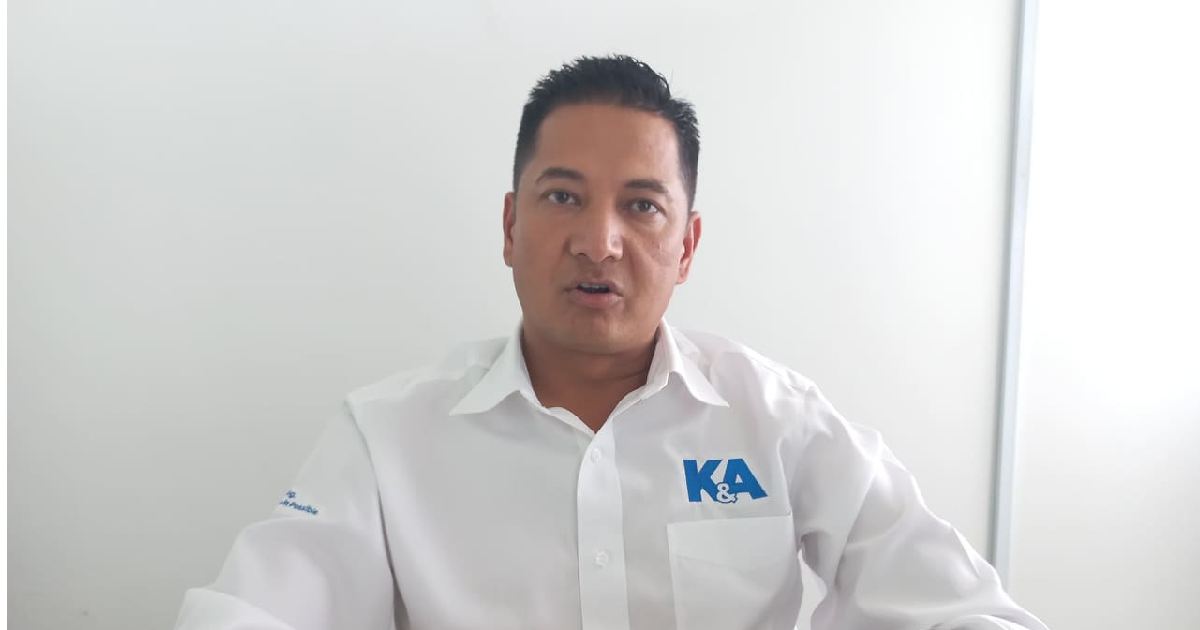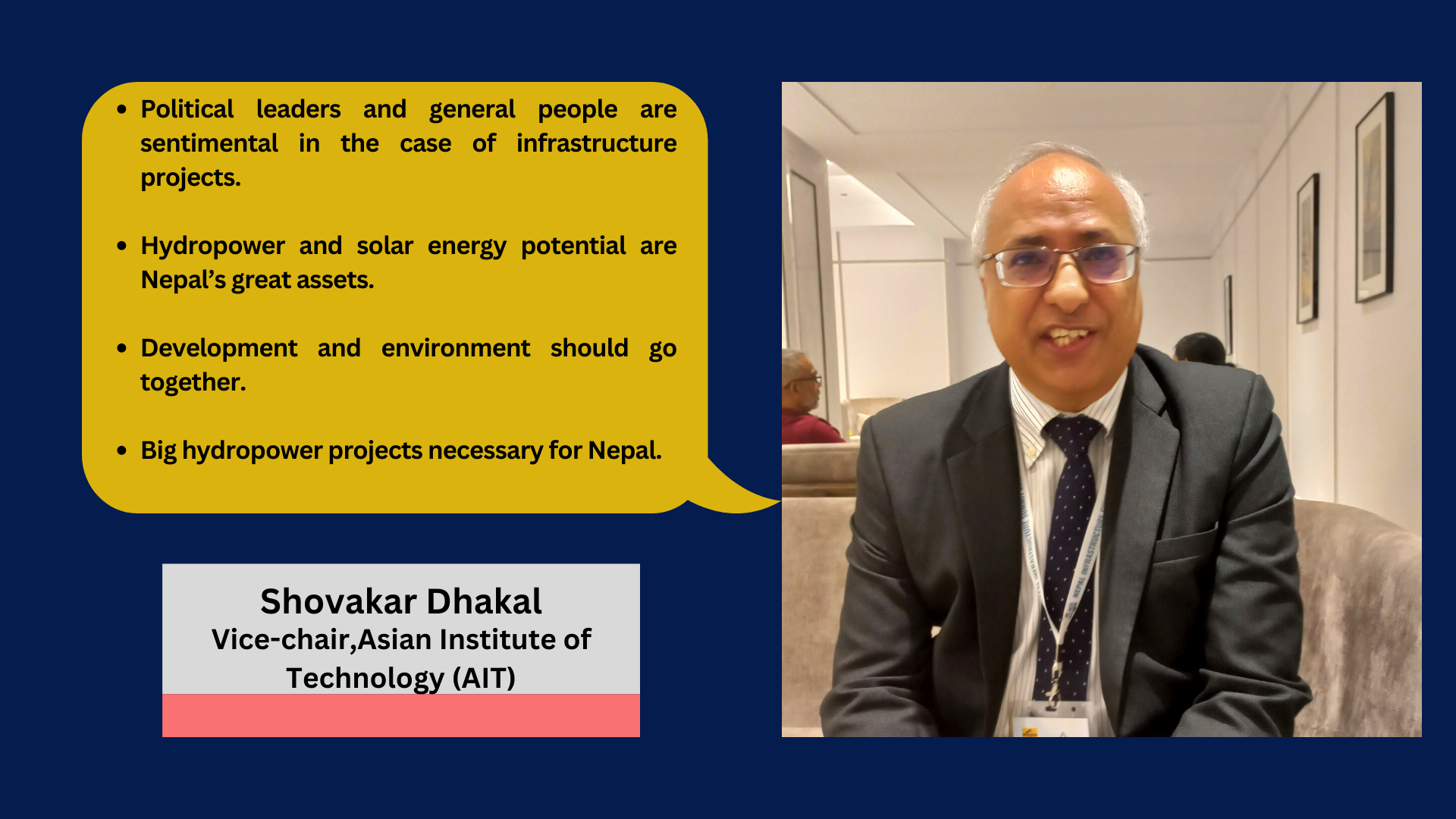
Prof. Shovakar Dhakal has been serving as the Vice-chair of the Asian Institute of Technology (AIT) for educational affairs since April 1, 2021. Dhakal, a professor of Energy, Environment and Climate Change Department, is also a former dean of AIT School of Environment, Resources and Development and former head of Energy, Environment and Climate Change Department. Seasoned professor Dhakal has been involved in research on climate change and active in various deliberation on climate change issues at various international forums. Dhakal holds sound knowledge of energy policy, climate policy, carbon emission, and climate adaptation and their dynamics. Dhakal talked in detail with Bhim Gautam, Editor of nepalinfrastructure.com on climate change, green infrastructure, clean energy development, and other issues.
You have been outside Nepal for a long time. How are you assessing issues of Nepal’s climate and energy?
There are hosts of issues in Nepal’s climate and energy. However, the deliberations and interactions on these issues are limited. To my knowledge, policy problems and frequent policy changes are responsible for a such low number of discussions. Lately, energy and the environment are directly related issues to the government’s responsibility. However, these issues could not get prominence in public forums as they deserve. How many policies are formulated based on facts? it is also an important thing. I believe that there is no problem in policy formulation as policies are made in a way that they can draw different interpretations. So, we have found an implementation gap in such policies. When it comes to the energy sector, we are heading towards an energy surplus after years of energy deficit that caused long hours of load-shedding. We need to make a proper estimation of energy consumption and supply capacity so that we can formulate policy accordingly. There are vital issues in green infrastructure, electric vehicles, and solid waste management. We can work on these issues for technology transfer and innovation in the interest of Nepal. Few initiatives have been taken in Nepal in the environment and energy sectors.
Development and environment are always contesting issues in Nepal. How can we integrate them into the process of development in Nepal?
Some projects are much politicized in the absence of objective deliberations on environment and development projects. We need to know the positive externalities and negative externalities of such projects. Without proper interactions to discuss such externalities, we can’t reach prudent decisions regarding development projects.
We must maintain a balance between environment and development. Developing countries like Nepal can’t ignore environmental issues while carrying out development activities to achieve higher economic growth. We should not take the path of developed countries which achieved higher development at the cost of the environment. Innovative development approaches including green development and green economic growth should be adopted in the development process. We need to promote deliberation based on evidence. I found political leadership and people in general alike more sentimental about some infrastructure projects. Some projects are much politicized in the absence of objective deliberations on environment and development projects. We need to know the positive externalities and negative externalities of such projects. Without proper interactions to discuss such externalities, we can’t reach prudent decisions regarding development projects.
How can Nepal be taken on board for promoting a green economy, though such issues are backed by western countries?
Whether we like it or not, most of the global issues are backed by western countries which are much developed and their agendas are followed worldwide. We can not stay away from most of those agendas outrightly. We can not move opposite direction against the global whim. We need to adjust ourselves to fit ourselves into the global context. Such global issues have offered many opportunities also. Technology transfer, capacity enhancement, and use of green climate funds are some of the opportunities that Nepal can utilize. We need to focus on how we can utilize them for our economic benefits rather than only wasting time on negative comments and skepticism.
In recent years, the management of solid waste in Kathmandu valley is becoming more challenging. Some private firms have come up with proposals to invest in this sector. However, enabling environment for private sector investment has not yet developed in the country. How can promote private investment in managing solid waste in the capital?
Solid waste management is not a ‘hate science’. We need to manage it properly. The most appropriate way of managing solid waste is to reduce the volume at sources. Then comes managing it properly. We can convert biodegradable solid waste into organic fertilizer and some can be recycled so that volume of solid waste can be significantly reduced before transporting it to a landfill site. We need to explore multiple measures to collect, process, and dispose of solid waste. Unfortunately, solid waste management has become a political issue in Nepal, which has made the problem further complicated.
Technology transfer, capacity enhancement, and use of green climate funds are some of the opportunities that Nepal can utilize. We need to focus on how we can utilize them for our economic benefits rather than only wasting time on negative comments and skepticism.
We have immense potential in the energy sector. There exist disputes over the upstream and downstream benefits few big hydropower projects. Other countries have made energy a strong medium for monetization. How are you evaluating the significance of big projects in our economy?
Existing small hydropower projects can’t withstand the demand for power during peak hours. Hence, it is high time for us to go for large-scale hydropower projects.
Here also come infrastructure development. Investment in the infrastructure sector would ultimately boost of Gross Domestic Product (GDP) and support overall economic development. Similarly, energy is a catalyst for economic development. Energy is the engine of the economy. There are different dynamics of energy- investment dynamics, economic mobility dynamics, and so on. A recent study conducted by us shows that Nepal needs large-scale hydropower projects to achieve self-sufficiency in electricity by 2026. These hydropower projects can be used in difficult situations because they have diverse benefits. Existing small hydropower projects can’t withstand the demand for power during peak hours. Hence, it is high time for us to go for large-scale hydropower projects.
However, we must not ignore the environmental aspect of reservoir-based hydropower projects and provide measures to minimize the effects on the environment. We need to have an evidence-based discussion. We get sentimental when it comes to developing hydropower projects in Nepal and then politics also come into play. We need to put aside these things as other countries are doing.
We are discussing clean energy. Among the energy sources, hydroelectricity is the key source. Solar energy also holds potential. How can we promote these green sources of energy without harming the environment?
Hydropower and solar potential are great assets of our country. Clean energy has become a global priority. We can harness the immense potential of these energy sources by mobilizing technology and financial resources. If we promote hydropower and solar projects can also support the government in boosting foreign reserves.
We can replace LP Gas with increasing use of electric appliances and save a huge amount of foreign currency required for importing petroleum products. Sufficient electricity generation paves the way for the development of industrial and commercial activities which generate more employment opportunities. However, we are still confused about whether to promote big hydropower projects or small ones and a centralized or decentralized approach for energy development. The share of solar power in the whole energy composition is still not clear. Electricity Regulatory Commission (ERC) should be more proactive to settle such issues.
Hydropower and solar potential are great assets of our country. Clean energy has become a global priority. We can harness the immense potential of these energy sources by mobilizing technology and financial resources. If we promote hydropower and solar projects can also support the government in boosting foreign reserves.
How can we manage the investment in green infrastructure? Do weak economies have the capacity to adopt an approach of a green economy?
We need to adopt a new financial model for the development of green infrastructure. A study conducted by International Finance Corporation (IFC) in 2017 shows Nepal needs a total investment worth USD 44 billion during 2018-30 to meet all development targets by 2030. Nepal needs investment worth USD 24 billion in all kinds of renewable energy including hydropower, solar, and wind energy. We need to conduct further studies on how to mobilize such a huge amount for investment and bring domestic and foreign investors on board.
How can Nepal implement this new concept of infrastructure development?
Green infrastructure is not a new concept. We can promote this approach by prioritizing and adopting environment-friendly policies complementing what we are doing now. Green infrastructure development is comparatively costlier. Clean energy, solid waste management, and green-based building, among others, are incorporated into green infrastructures. The Green building approach is getting less priority in our country.
Similarly, climate-smart agriculture and urban development are also among the issues in green infrastructures. We need to come up with a package of policies as a single policy can not cover all issues of green infrastructure. Some efforts are being made from the government side. Nepal Rastra Bank, the central bank, is developing a separate guideline to promote green infrastructure. We need to be optimistic on such initiatives will yield desired results.
Nepal has set net-zero targets by 2045. However, Nepal still lacks a clear roadmap to achieve the target. How can we move forward to meet the target?
Nepal needs to take up multiple ways to meet the ambitious target. Such ways, their challenges, and opportunities as well as necessary actions to be carried out, should be properly assessed and analyzed. I think we are missing such things. We need to set alternative plans in case of the original plan seems not achievable.
At an international conference in Glasgow last year, Nepal announced its commitment to achieving a net-zero target by 2045. I am not aware of how the government doing internal homework to fulfill the commitment. As per my knowledge, UNDP has been supporting Nepal in it. We need to have extensive discussions and deliberations on this issue. However, some activities are seen in the energy sector. We need to work on how to make forests and land carbon-free, where we are lagging behind. While assessing our capacity, I am feeling that Nepal hurried and set targets a little bit earlier. Most countries have set targets for around 2065.
I am afraid, we may not be able to fulfill the target set for 2045. Nepal needs to take up multiple ways to meet the ambitious target. Such ways, their challenges, and opportunities as well as necessary actions to be carried out, should be properly assessed and analyzed. I think we are missing such things. We need to set alternative plans in case of the original plan seems not achievable.


